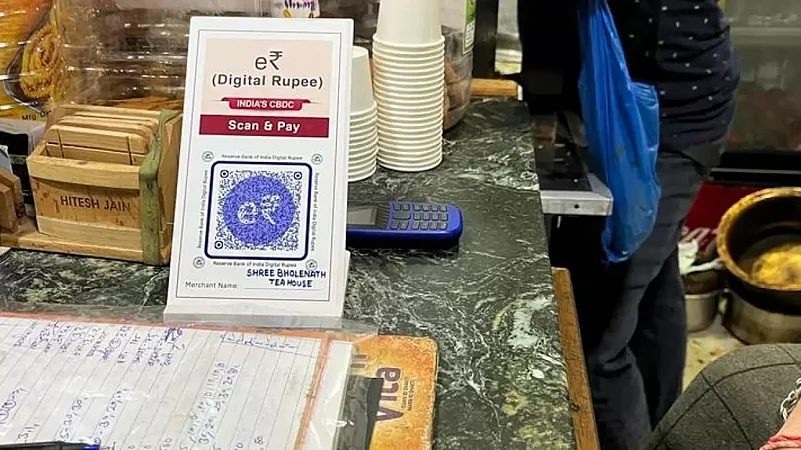The Reserve Bank of India (RBI) has begun a trial of its retail central bank digital currency (CBDC) or e-rupee in four major Indian cities—Mumbai, New Delhi, Bengaluru, and Bhubaneswar.
Eight banks, including State Bank of India (SBI), ICICI Bank, Yes Bank, and IDFC First Bank, are participating in the pilot run from December 1, 2022.
The launch comes weeks after Finance Minister Nirmala Sitharman announced its possible rollout.
Outlook Money has quizzed a few people, including business owners and officials of financial services companies, to understand the pulse on the ground.
Mahindra Patidar, 25, who runs the Bholenath Tea House in Mumbai, said RBI officials visited his shop and advised him to open an HDFC account. They also helped him down the e₹-R QR (Quick Response) code.
RBI said the pilot project would initially cover select locations in a "closed user group" comprising participating customers and merchants.
"The e₹-R would be in the form of a digital token that represents legal tender. It would be issued in the same denominations that paper currency and coins are currently issued," RBI said in a press release.
CBDCs would be distributed through intermediaries, like banks. And users can transact e-rupee through a digital wallet offered by the participating banks and stored on mobile phones.
RBI said the transactions could be person-to-person (P2P) or person-to-merchants (P2M). "Payments to merchants can be made using QR codes displayed at merchant locations. The e₹-R would offer features of physical cash like trust, safety, and settlement finality. As in the case of cash, it will not earn any interest and can be converted to other forms of money, like deposits with banks," said RBI.

How Is The e₹-R QR Different From UPI QR?
The unified payments interface (UPI) uses balances of bank accounts, while CBDCs are held in a wallet. Blockchain experts believe a digital rupee on UPI rails would ensure zero payment transaction failure, thanks to the on-chain settlement functionality inherent to the design of digital currencies.
Offline payment functionality is also being experimented with as part of retail CBDC trials. It will be a game-changer in areas where internet connectivity is erratic.
"As digital payments are touching new highs every month, it is necessary to have a reliable and complementary network to complement the existing digital payments infrastructure," says Sharat Chandra, co-founder of India Blockchain Forum.














